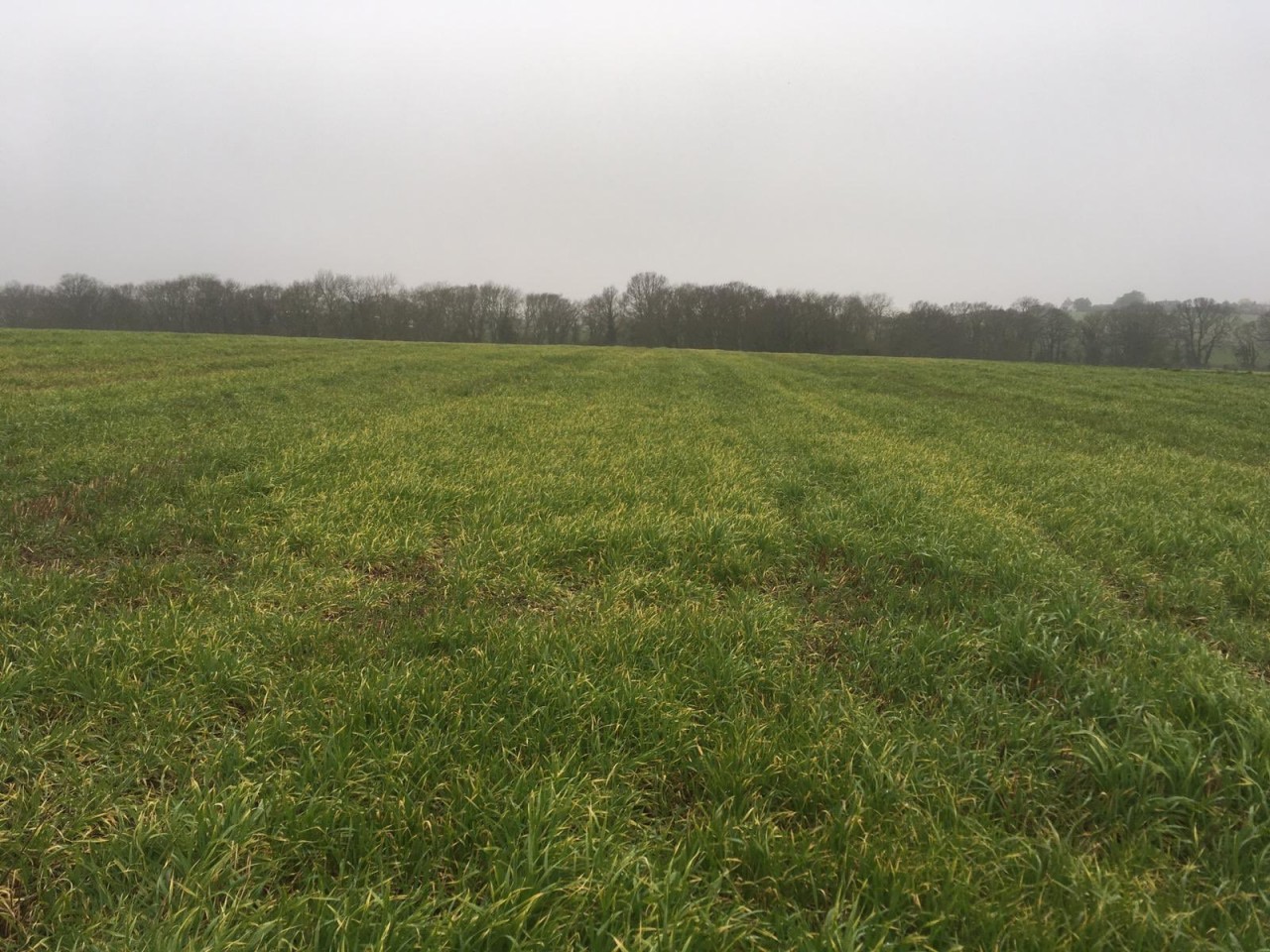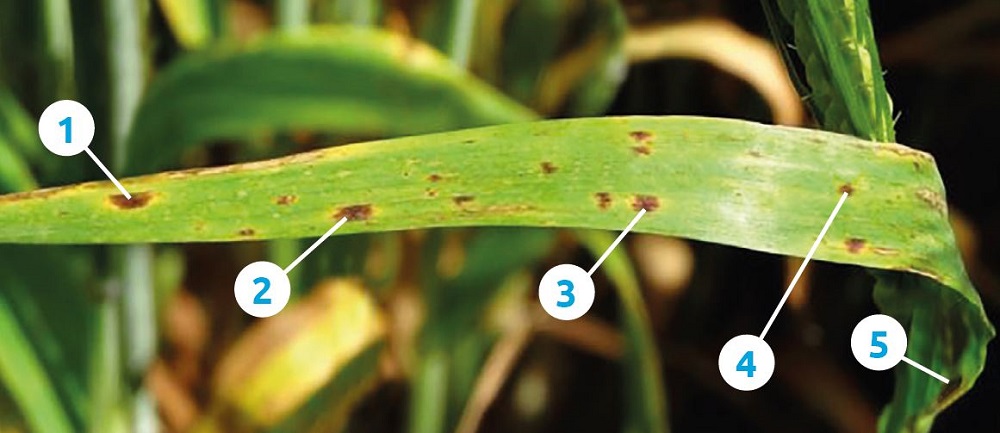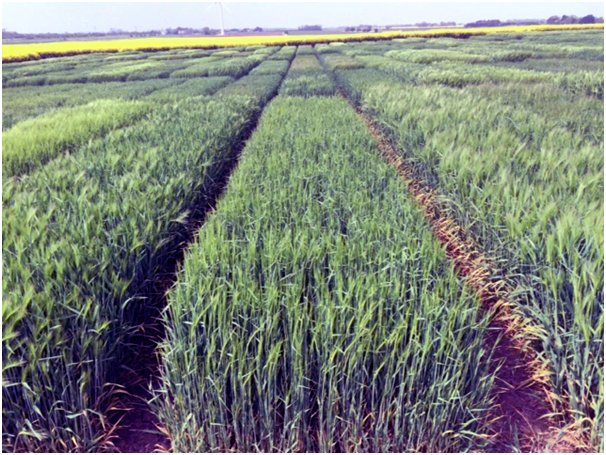Ramularia leaf spot in barley – life after chlorothalonil
Ramularia causes leaf spot symptoms in barley. While it has typically been more of an issue in the north of the UK, it is now being reported with increasing frequency further south. The disease has historically been a bigger issue in spring barley but the economic losses in winter barley are now an increasing problem too.
The disease has a complicated life cycle and is seed, air and trash-borne. The fungus, Ramularia collo-cygni, causes ramularia and grows from infected seed. It then moves systemically within new plant growth. Airborne spores produced on trash and crop debris can also infect plants.
Spotting signs of the disease
There are no visible symptoms of ramularia during the early stage of a crop's development. It is generally not until after the crop has finished flowering that the pathogen is triggered into the damaging part of its life-cycle, and we then start to lose green leaf tissue. Stressed crops are thought to be more likely to show symptoms, including those exposed to high light levels, waterlogging and rainfall after flowering. However, even stress associated with flowering may be sufficient to initiate symptoms.
When it comes to identification, ramularia is often mistaken for other diseases, such as the spot form of net blotch, tan spot or physiological spotting.AHDB have produced a very useful factsheet to help with identification - Ramularia leaf spot in barley | AHDB. Early symptoms comprise small brown pepper spots on the upper leaves. These develop quickly into typical ramularia leaf spot lesions. Mature ramularia lesions can be distinguished from other foliar symptoms by applying the 'Five Rs':
Ringed with yellow margin of chlorosis
Rectangular shape
Restricted by the leaf veins
Reddish-brown colouration
Right through the leaf.
Net blotch and tan spot lesions are not rectangular or restricted by leaf veins. Physiological leaf spots, caused by oxidative stress, tend to be caused by superficial browning on upper leaf surfaces, while the undersides remain unaffected. These cause less yield loss but can trigger the production of ramularia leaf spots.
Taking control
Disease forecasting tools are being developed to allow field-level ramularia risk to be assessed, allowing advisors and growers to make more informed judgements on control strategies. Previous research suggested that long periods of leaf surface wetness at stem extension could be the main influencing factor on ramularia disease severity. However, cool nights and heavy morning dews can be as important. Under cool conditions plant growth can be slow, allowing the ramularia to extensively colonise the crop more rapidly as the crop is slow to grow away from the infection. More recent work, however, shows the relationship between environmental and crop factors; ramularia levels are more complex than just leaf wetness and are likely to also be influenced by previous cropping, cultivation system, variety, rainfall and light levels after flowering.
When it comes to control strategies, it is first important that we understand the current resistance status associated with some of our key fungicide modes of action. Resistance to QoI fungicides occurred in the early 2000s and is now present at high levels, with a corresponding loss of efficacy.
Target site mutations affecting field performance of SDHIs have been confirmed in Europe in 2016 and again in 2017/18. Marked declines in azole efficacy were noted at some sites in the UK and in Europe in 2017. Chlorothalonil (CTL) provides good protectant activity and is now an essential component of spray programmes where ramularia is a target, Source - Fungicide Resistance Management in Cereals. On a positive note, new chemistry has been shown to have activity against ramularia, e.g. Revysol®, and it has been indicated that Inatreq™ and the third generation SDHIs in development should also have efficacy.
Variety resistance
There are currently no genetic resistance ratings for ramularia on the Recommended Lists for cereals and oilseeds (RL) | AHDB. There are no effective seed treatments and, while DNA tests are available using Polymerase Chain Reaction (PCR) diagnostics which can detect R.collo cygni DNA before symptoms are seen, testing is not commercially available. Farm-saved seed should therefore be avoided from crops which had high levels of ramularia symptoms.
Given the resistance situation, combinations of SDHIs + prothioconazole with (CTL) have proven to be the most effective. However, with the loss of CTL later this year (last legal use date 20th May 2020), control is going to be more difficult in the future. The key application timings for fungicide treatment is BBCH 45 – 49 (late boot stage to first awns appearing). However, there are benefits from adopting a programmed approach by applying CTL at BBCH37 +/- PGR and also from later applications up to BBCH 59.
NOTE: Watch for restrictions on certain actives in malting crops - UK Malt, the Maltsters' Association of Great Britain | Pesticides. In spring crops this year, and as we look forward to 2021, Folpet is likely to have an increasing role to play. While not a direct replacement for CTL, when used as part of a programmed approach, it is adding to the level of control. Proactive resistance management will be critical if we are going to effectively manage ramularia in the future.
In summary
As a minimum, follow the principles below:
- Do not apply single site active ingredients on their own
- SDHIs should always be applied in a balanced mixture with at least one fungicide with comparable efficacy against the target pathogens from an alternative mode of action group
- Use in mixture with fungicides with good efficacy
- Apply fungicides at a timing that allows for maximum protectant activity – this is prior to flowering and symptom development and is usually aimed at booting.
In addition to traditional fungicide chemistry, crop nutrition, elicitors and biostimulants may also have a key role to play. If we can ensure the plant is in the 'best possible shape', we may be able to mitigate plant stress, trigger the plant's natural defence mechanisms and thus reduce the impact of ramularia infection.
For information and advice on any of the above, please get in touch.
As a subscriber, you’ll receive email alerts each time a new blog is published so you can always stay updated with the latest advice and insights from our experts






Comments